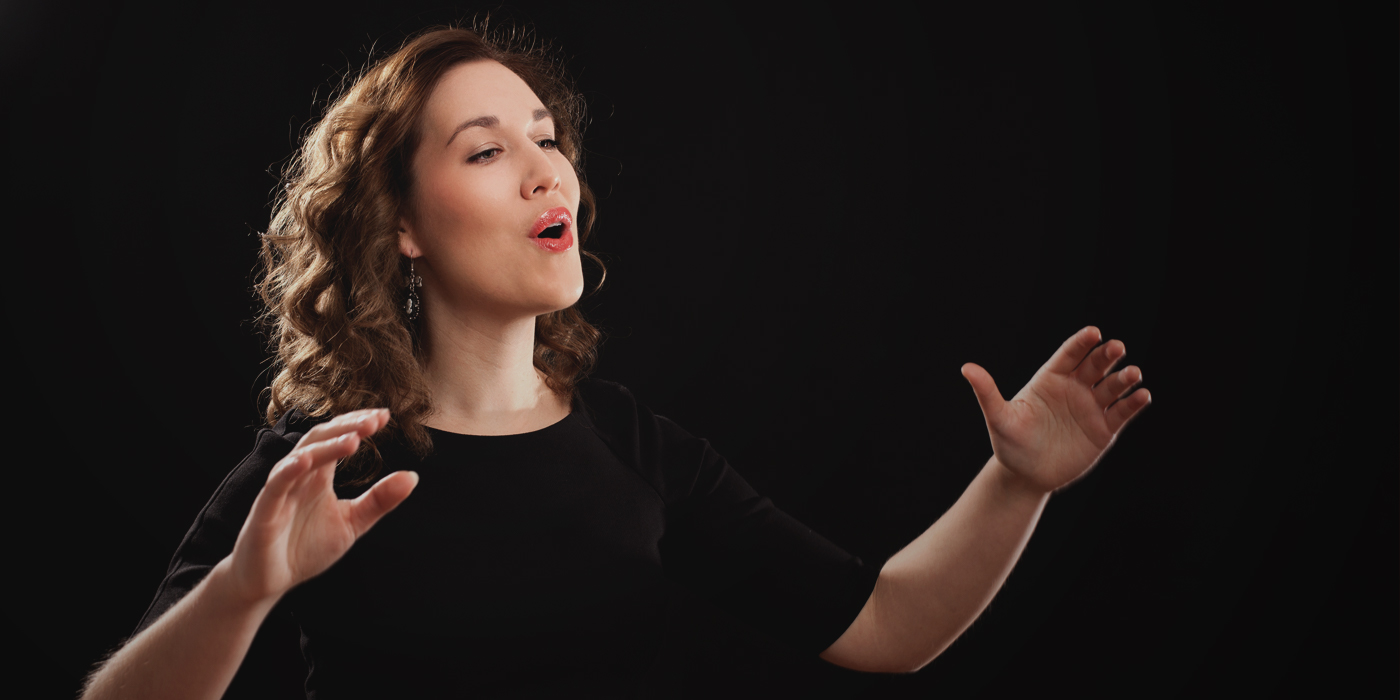
Here are five tips to help improve your conducting during choir rehearsals.
1. Know What Sound You Want
I believe it’s important to know the sound that you ultimately want your choir to achieve – and audiate it – before you give them a downbeat.
If you are able to hear the sound you want in your head, you are more likely to prep for that sound. You don’t want to prep for ”Oh, they just got this piece of music and they’re about to stumble their way through the first eight measures.”
Even if that previous statement is true, we should have those eight measures in our ear with the tone, dynamic, and vowel shape that we are looking for in the end. That way, even if they crash and burn on that tricky rhythmic pattern, they at least did it at the written dynamic and held out the first long note for its full duration.
Take every breath as if you were preparing to sing each phrase and engage your core for a steady exhale, and they will do the same.
2. Incorporate Core Engagement and Good Technique
Even at first read, you need to incorporate core engagement and good technique. Shout-out to the directors who get stuck behind the piano for four weeks! I know this is tricky when you’re trying to support the tenors and basses with your left hand while showing the pattern in your right hand. However, find short sections in each rehearsal where your ensemble can sing a cappella (you can even do this during a warm up) so you can get out in front of them and be 100% in the conducting. When you do get the opportunity to wave your arms in front of them, make sure you are emulating your best posture and showing the phrases you want.
Listen, don’t sing along. They might surprise you!
3. Try Standing on the Podium
Give yourself at least one run-through where you’re standing in one spot on the podium.
Before I started graduate school, I was a “moving target” in my classroom. Sometimes, this was required for the sake of classroom management. For example, I’d have to beeline it to the 8th grade alto in the 2nd row to confiscate her cellphone in the middle of a piece while maintaining a conducting pattern. Other times, I’d migrate towards certain sections to get them to sing out more, emphasize the importance of their parts, or give them confidence. I believe that that my proximity was saying “we are in this together, tenors! Don’t be afraid of that high F!”
This past year, I discovered that moving off the podium disengaged my core and negatively affected the breathing of my singers. By staying in one spot, keeping my core engaged, and simply making eye contact with the section that needed support, I found I was more successful in getting a healthy sound from my choir.
4. Incorporate Conducting Into Your Warm Ups
The purpose of warm ups is to strengthen the musicians in your ensemble, whether it be breathing for singing, vowel unification, singing on the breath, range expansion, diction clarity, or blending and intonation. Why not also teach them to follow your gesture for phrasing?
An easy way to incorporate conducting into your warm-up sequence is to have them follow you on a quarter note hiss while you beat a four pattern. With that, you can change your tempo, gesture size (for dynamics), or rebound size (for articulation). You can even have your students conduct this pattern with you. This can prepare them to get up in front of the ensemble during warm ups at a later time and conduct their peers through this same exercise.
Taking this a step further, I think rounds and intonation exercises are great opportunities to conduct during warm ups… If you don’t feel solid or connected with some of your gestures, it’s also a good time for you to experiment with hand position to see if you can get a sound you can apply to their repertoire.
5. Prepare!
A nearly-flawless and connected gesture helps a lot… but it’s no substitute for preparation.
Picking rep early – and studying it – isn’t always enough. Every year I’ve tried to go into the first day of school with a solid game plan for each piece. I’d have prepared educational goals, translations and IPA (if in a foreign language), and would have identified potential problem spots for each voice part. Inevitably, something unforeseen would happen. Maybe that piece I thought would require eight weeks of study (for my un-auditioned choir) would be learned in two days. Then I’d realize that they could handle something more challenging so I’d be tearing through my library after school to find something new to give them the next day while waiting for those other back-ordered octavos from JWPepper.
It would all go downhill from there. School life would catch up with me, and everything that would occur in the second half of the semester would never reach its full potential because I never had a clear aural image in my head to convey to my students until weeks into the rehearsal process. Having that sound in your ear before your students sing their first note gives you the ability to multitask effectively when you are teaching those initial notes and rhythms. If you always know the sound you want from the beginning, you won’t have to go back and fix nearly as much and your students can continue on a forward trajectory towards better musicianship.
Plus it doesn’t hurt to have a few extra titles selected – just in case.